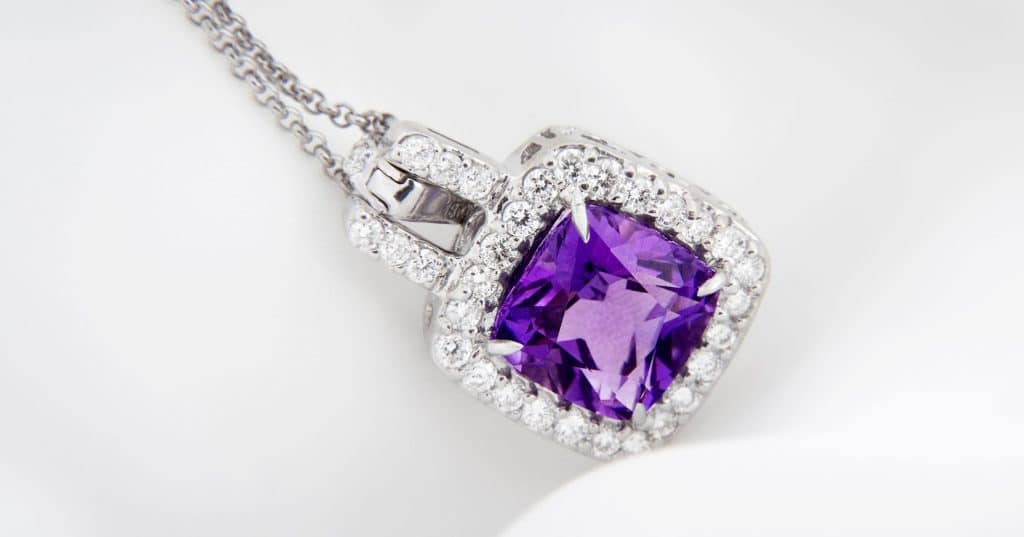Amethyst has been used for centuries by a variety of cultures. Some of the oldest amethyst jewelry dates back to as early as 2000 BC. Legends and myths abound.

In Greek, amethyst means “not drunken.” Ancient Greeks and Romans believed this gemstone could ward off the intoxicating powers of Bacchus and keep the wearer clear-headed and quick-witted. They would even add these crystals to their wine goblets in an attempt to keep from getting drunk.
Catholic bishops felt that amethyst could prevent people from getting “drunk” on religious power, and instead kept them more grounded. The Book of the Dead encouraged Egyptians to turn amethysts into heart-shaped amulets for burial.
Amethyst’s mythical properties are vast. People have believed that amethyst could control evil thoughts, make you smarter, protect you from witchcraft and black magic, help soldiers win battles, improve focus, and create a sense of peace and calm.
These legends make it a good gemstone for those in the creative arts to help foster new, unique ideas. Some who meditate with amethyst feel it relieves stress and anxiety, while encouraging communication and intuition.
If you’re looking for amethyst jewelry for yourself, a friend or someone with a February birthday, find an American Gem Society jeweler near you.
NOTE: The above is intended to educate on the myth, legend, and historical lore of amethyst and is not meant to be interpreted as fact.